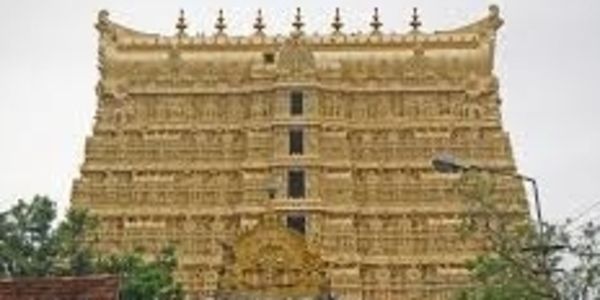
The mysterious chamber of the Padmanabhaswamy temple
The Sree Padmanabhaswamy temple, dedicated to Lord Vishnu is well known as the world’s richest temple. Located in the capital city of Kerala, Thiruvananthapuram, the shrine is currently run by a trust headed by the royal family of Travancore. Padma means lotus, Nabha means naval and Swamy refers to the Lord. Thus the Padmanabhaswamy temple derives its name from the position of Brahma seated on a lotus emanating from the Lord's navel. The temple is the abode of Lord Vishnu. The Lord is enshrined in the "Anantha-sayanam" posture (in the eternal sleep of Yoga-nidra on the serpent Anantha). The Lord is revered so much that the Maharajah of Travancore bears the title, "Sree Padmanabhadasa’ which means ‘Servant of Lord Padmanabha.’ The deity is made from 12,000 saligramams which are fossilized shells from the banks of Gandaki river in Nepal. These sacred stones are considered to be the symbol of Lord Vishnu. There are six kallaras or chambers in the Temple out of which Bharatakkon Kallara (Chamber B) is very closely associated with Sri Padmanabhaswamy and is considered very holy. It houses a Srichakram which is a sacred geometric pattern that can unravel the mysteries of the universe, an idol of Sri Padmanabha and many valuables meant to enhance the potency of the Principal Deity. In 2011, a seven-member committee was sent to the temple by the order of the Supreme Court of India. In the presence of the Head Trustee of Travencore Trust of Sri Anantha Padmanabha Swamy, the temple's six secret vaults were opened. They revealed several hundred pots and other items made of gold. Among the reported findings, were three-and-a-half feet tall solid pure golden idol of Mahavishnu studded with hundreds of diamonds and rubies and other precious stones. They were shocked to find a 18-foot-long pure gold chain, a gold sheaf weighing 500 kilos, a 36-kilo golden veil, 1200 'Sarappalli' gold coin-chains that are encrusted with precious stones, and several sacks filled with golden artifacts, necklaces, diadems, diamonds, rubies, sapphires, emeralds, gemstones, and objects made of other precious metals. There is also a 16-part gold anki weighing almost 30 kilograms that is the ceremonial attire of deity, gold coconut shells studded with rubies and emeralds, and several 18th-century Napoleonic era coins were found amongst many other objects. These vaults have been designated as vaults A, B, C, D, E and F for documentation purposes out of which, the main vault B is considered by the Trust members and other learned astrologers of India, as a highly mysterious, sacred and risky and dangerous to unveil it. It is said that ‘sidda purashas’ have fixed the chamber B to the secret chamber with the ‘naga bandham’ or ‘naga paasam’ ‘mantras in the 16th century. The door of such a secret vault can be opened by a highly learned ‘sadhu’ or ‘mantrikas’ who knows how to extricate ‘naga bandham’ or ‘naga pasam’ by chanting a ‘garuda mantra'. The door cannot be opened by any other means. People believe that if any human attempt is made to open the mysterious chamber B by man-made technology, then catastrophes are likely to occur in and around the Temple premises or throughout India. According to a report by Comptroller and Auditor General of India Vinod Rai, Vault B has been opened a number of times and more recently in 2011, but Princess Aswathi Thirunal Gowri Lakshmi Bayi clarified that Mr. Rai is referring to one of Vault B's ante-rooms, which the Supreme Court-appointed observers had opened even in 2011.The anteroom leads into another room which has never been opened.
